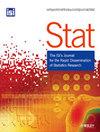学术统计和数据科学合作单位的现状及实例
IF 0.8
4区 数学
Q3 STATISTICS & PROBABILITY
引用次数: 0
摘要
不同类型的机构和不同时期提供的学术统计协作资源可能会有所不同。特别是在基础设施管理和业务模式、人员配置模式以及员工发展机会方面,这种差异可能会出现。在本手稿中,我们将举例说明现代学术统计合作单位的这三个主题,并介绍其主要优势和挑战。本文章由计算机程序翻译,如有差异,请以英文原文为准。
The current landscape of academic statistical and data science collaboration units with examples
The delivery of academic statistical collaboration resources can vary among types of institutions and across time. In particular, this variation might occur in the management of infrastructure and the business model, the staffing model and opportunities for staff development. In this manuscript, we present examples of these three themes in modern academic statistical collaboration units and describe key advantages and challenges.
求助全文
通过发布文献求助,成功后即可免费获取论文全文。
去求助
来源期刊

Stat
Decision Sciences-Statistics, Probability and Uncertainty
CiteScore
1.10
自引率
0.00%
发文量
85
期刊介绍:
Stat is an innovative electronic journal for the rapid publication of novel and topical research results, publishing compact articles of the highest quality in all areas of statistical endeavour. Its purpose is to provide a means of rapid sharing of important new theoretical, methodological and applied research. Stat is a joint venture between the International Statistical Institute and Wiley-Blackwell.
Stat is characterised by:
• Speed - a high-quality review process that aims to reach a decision within 20 days of submission.
• Concision - a maximum article length of 10 pages of text, not including references.
• Supporting materials - inclusion of electronic supporting materials including graphs, video, software, data and images.
• Scope - addresses all areas of statistics and interdisciplinary areas.
Stat is a scientific journal for the international community of statisticians and researchers and practitioners in allied quantitative disciplines.
 求助内容:
求助内容: 应助结果提醒方式:
应助结果提醒方式:


